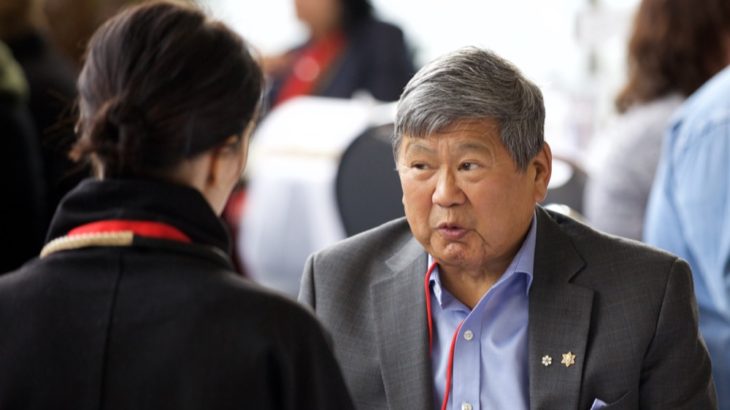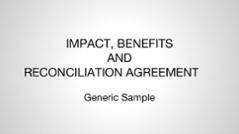(This post is from a Bob Joseph interview of Lyle Viereck on Aug 11, 2015. The original can be viewed here.)
The concept of reconciliation as part of negotiations is cutting edge. Could you please explain what this means? How does reconciliation factor in negotiations?
The concept of reconciliation as part of negotiations really begins before you start. It begins by organizations making reconciliation part of their DNA. It’s an understanding and recognition of what has happened in the past to Aboriginal Peoples and the work that’s been done over the past decades in terms of reconciling that past and building a new future for Aboriginal and non-Aboriginal people. The organization then needs to incorporate this recognition into their negotiations and in how the organization operates and carries out its business.
I have used the analogy of DNA because many people have mistakenly believed that the DNA with which we are born is the sole determinant for who we are and will become, but scientists have understood for decades that this is a flawed theory. As individuals and organizations we can change how we think and how we act through learning and experiencing the world around us in new ways.
As a negotiator, I like to have a conversation about what reconciliation means both to the organization and to the Aboriginal group. The direction and outcomes that First Nations want to see in terms of reconciliation can come in many forms. Some examples include educational initiatives that can make a difference in the lives of children, families, and the community as a whole. The remembrance and apology for what happened in the past can be expressed in ceremonies around resolving past issues and setting a new course for the future.
In order to make this work there needs to be a deep commitment in which everybody plays a role in reconciliation whether they are individuals or an organization. Until reconciliation is built into the DNA of a company, it doesn’t completely become part of the process. This is about moving beyond the process of consultation to a much deeper level – to reconciling key issues and figuring out new ways to live and work together.
Do you feel Canada is on the cusp of a foundational change in terms of reconciliation?
That’s a very hard thing to measure but I think there’s a very deep recognition and the steps taken have led to progress and change in this country. We now are at a point of asking how do we move beyond this constant ebb and flow process of either negotiation and settlement (with individual Nations) or litigation to a third place that can really be sustainable in terms of relationships. I don’t think this is going to happen overnight. The Truth and Reconciliation Commission’s report has given recommendations to all sectors about what can be done around reconciliation and I think this is the path we need to follow to find a place where we have equity and recognition of the various cultures and societies – both Aboriginal and non-Aboriginal.
What common mistakes have you seen people make in negotiations with First Nations?
In the beginning:
- Lack of self-awareness of past performance in working with First Nations;
- Failure to recognize the vast network that exists between First Nations – if you have not lived up to your promises it will become common knowledge – if you have made mistakes, acknowledge what they were and try to rectify;
- Organizations from outside Canada assuming that negotiation processes that have worked elsewhere will work with Aboriginal communities in Canada;
- Failure to seek advice from people who have local knowledge and understanding prior to engagement.
In the middle:
- Setting the timetable before engaging with the community and then being frustrated when finding the issues often are more complex and take more time;
- Failure to recognize that you need to take the time to build the relationship and work through issues.
In closing:
- Neglect by both First Nation communities and organizations to have clarity about what each party wants to accomplish in the agreement and setting it out very clearly;
- Failure to have a clear implementation plan – how you are going to work through the implementation, the time frame and the people who will be involved.
You have a new client who needs to negotiate with a First Nation. What are the top three things they need to do before they begin?
- Do your homework before you begin your discussions – there are many sources for information on First Nation communities. Some communities have very deep protocols that need to be understood.
- Don’t have preconceptions about the leadership or the community members
- Don’t engage solely with the leadership of the community – try to engage with the entire community, if possible. You will find some leadership that prefers all discussions go through them and they take the information back to the community. But you will also find other leadership that is quite open and encourages the organization to talk to the community. Again, do your homework before you begin your discussions.
Download a generic sample Impacts, Benefits and Reconciliation agreement by clicking the image below.

